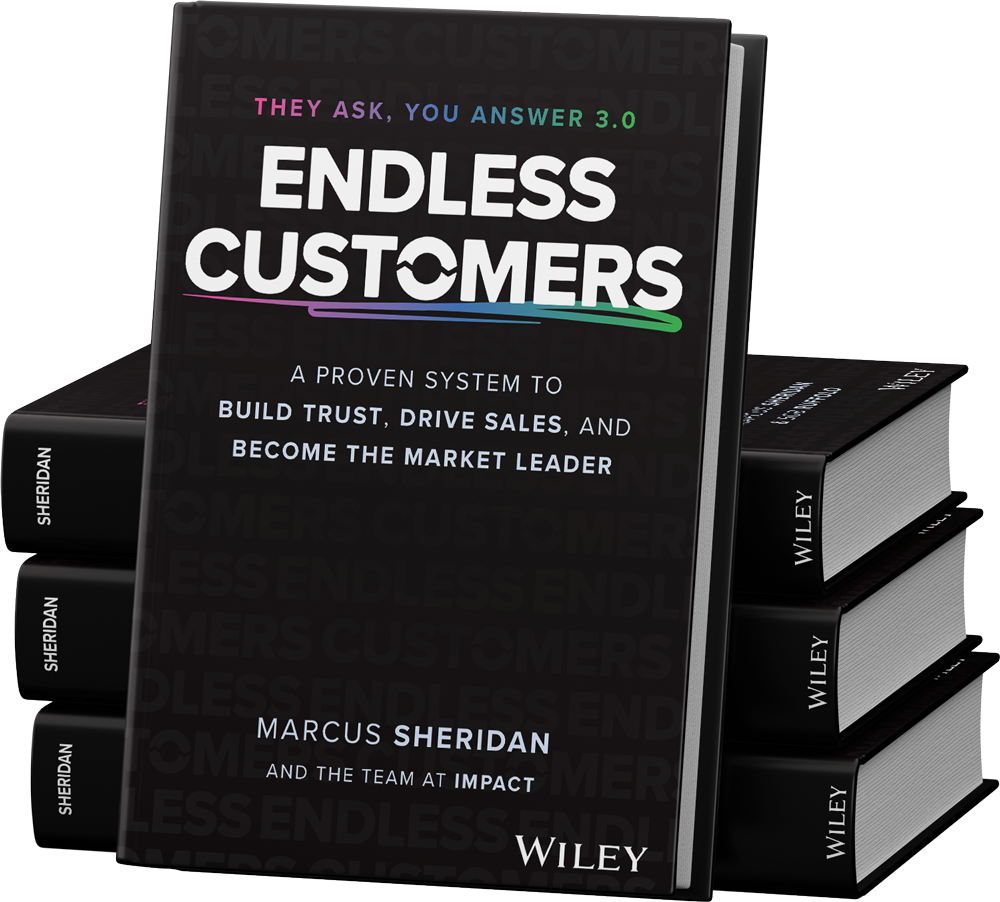Topics:
Content Marketing Sales & Marketing Alignment Content Managers Content and Inbound Marketing 101 Sales EnablementSubscribe now and get the latest podcast releases delivered straight to your inbox.
How to Create Sales Enablement Content That Drives Revenue

By Chris Duprey
May 15, 2025

How to create sales enablement content
- Start with the Questions Buyers Ask
- Use the Five Best Topics of Content
- Make It Assignment Friendly
- Involve Sales in Content Creation
- Build a Content Library Reps Can Actually Use
Picture your sales team armed with content so clear and helpful that prospects nod through every conversation, ask sharper questions, and breeze to a confident “yes.” That’s the power of true sales enablement content.
These are assets built to solve real buyer problems, remove guesswork, and keep momentum humming from first touch to signed contract.
In this article, you’ll learn how to craft the kind of content that does heavy lifting for every rep, turning your marketing library into a revenue engine instead of a digital junk drawer.
What Is Sales Enablement Content?
Sales enablement content is not about pitching. It’s about preparing.
It’s the content your reps send before or after a call to:
- Answer tough questions
- Disarm objections
- Build trust
- Shorten the buying cycle
Think pricing breakdowns, product comparisons, competitor analysis, customer testimonials, and process explainers.
But here’s the key: It’s used by sales, not just created for them.
When content is built to actually support a conversation, not just sit on a website, that’s sales enablement. If your content isn’t helping a deal move forward, it’s not sales enablement.
Great enablement content should lead to better conversations, faster decisions, and more confidence on both sides of the deal. If it doesn’t, it needs to be rethought.
Why Sales Enablement Content Fails
Most sales enablement content fails because:
- It was created by marketing in a vacuum
- It’s too polished and too vague
- Reps don’t know it exists or don’t trust it
- It answers the wrong questions at the wrong time
A sales enablement asset needs to be built with a real question, a real buyer, and a real objection in mind.
If it doesn’t feel relevant and helpful to a buyer in the moment of decision, it won’t be used. Reps won’t send it. Buyers won’t read it. And your sales process won’t get better.
Reminder: If your reps don’t want to send it, your buyers won’t want to read it.
How to Create Content That Actually Helps Close Deals
Enablement content should be as tightly connected to your sales process as the CRM itself. If your content isn’t guiding deals forward, it’s just decoration.
Here's how to create good sales enablement content:
Step 1: Start with the Questions Buyers Ask
Your best enablement content comes from your sales calls.
Talk to your sales team. Ask:
- What’s the hardest question you get?
- Where do deals get stuck?
- What’s the one thing you wish every buyer knew before the call?
These questions reveal the gaps—the moments where trust breaks, momentum stalls, or confusion creeps in. Your job is to turn those into resources.
Build content that answers those questions clearly and honestly.
And don’t water it down. The best content is blunt, transparent, and specific. If you want it to work in sales, it has to say the thing everyone else avoids.
Want to stand out? Talk about pricing, limitations, who you’re not a fit for. The companies that do this don’t lose deals, but rather, they win trust. That’s the fuel that closes.
Step 2: Use the Five Best Topics for All Content
These are the 5 types of content that consistently drive traffic, leads, and sales:
- Cost — What will this cost me?
- Problems — What could go wrong?
- Comparisons — How does this stack up to the alternatives?
- Reviews — What do others think?
- Best-of — What’s the best option for me?
If your enablement content doesn’t touch at least one of these areas, you’re probably playing it too safe.
Why do these work? Because they answer the questions buyers are already Googling. That’s how you earn trust before the call even happens, and speed up the entire decision cycle.
Every rep should be armed with content from each of these buckets. Cost and comparison content help frame expectations. Problem and review content surface objections and answer them early. Best-of content helps the buyer feel like they’re making a smart, informed decision.
The Big 5 are table stakes now.
Step 3: Make It Assignment Friendly
Content only works when buyers actually use it. So build it to be assigned:
- Clear title that matches the buyer’s question
- Short and scannable format (think article or 2–3 minute video)
- Can be used before or after a sales call
Example: “What You Need to Know Before Comparing Roofing Bids” — a simple one-pager or video that tees up the conversation.
The most effective sales enablement content is clear, pointed, and actionable. And it should come with instructions for the rep: when to use it, why it matters, and how to frame it.
Every time you build a piece of content, ask: “Can this be assigned before a call?” If the answer is no, it probably won’t get used. Assignment-friendly content speeds up your process because it removes repetitive explanations, sets expectations early, and positions your reps as guides.
Step 4: Involve Sales in Content Creation
Let your reps shape the message. Better yet, put them on camera.
Reps should:
- Help script or outline the content
- Deliver parts of it on video
- Recommend how and when it should be used
When sales owns the content, they’ll actually use it. And buyers will trust it more, too.
Involving sales also ensures the content stays grounded in reality. It ensures that it covers the questions, objections, and pain points your reps actually hear every day. That’s the difference between enablement and marketing fluff.
If marketing owns creation and sales owns distribution, you’ll always have a gap. Co-creation is the bridge. It builds credibility, improves adoption, and creates a content engine that actually helps close deals.
Step 5: Build a Content Library Reps Can Actually Use
Don’t hide your best stuff in a 34-tab spreadsheet. Organize your enablement content by:
- Sales stage
- Buyer question
- Objection it resolves
Use a simple dashboard or shared folder. Keep it updated. Make it frictionless.
If your reps can’t find it in under 30 seconds, they won’t use it.
Even the best content fails if reps can’t find it fast. The goal is activation. Think of your library like your team’s playbook. Everyone should know where to go, how to use it, and when to plug it into a deal. Keep it clean, visible, and tied to real buyer moments.
Create Great Enablement Content
Great enablement content does three jobs: answers tough questions, builds trust fast, and moves deals forward.
When you source topics from real calls, lean on The Big 5, keep assets assignment-friendly, involve sales in creation, and house everything in a clean library, you transform “marketing materials” into revenue multipliers.
Want this engine humming across your whole team? The Endless Customers System™ gives you the frameworks and coaching to weave buyer-centric content into every stage, so trust compounds and revenue scales. Let’s talk about making that happen.


Order Your Copy of Marcus Sheridan's New Book — Endless Customers!